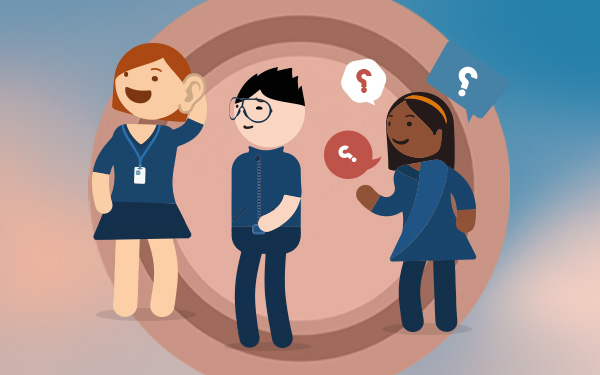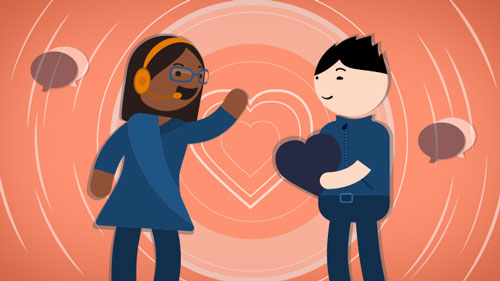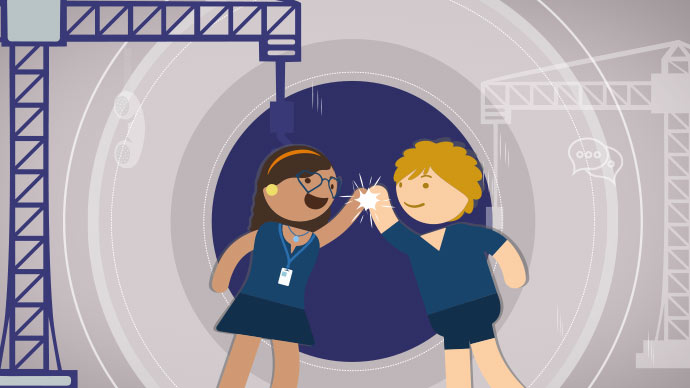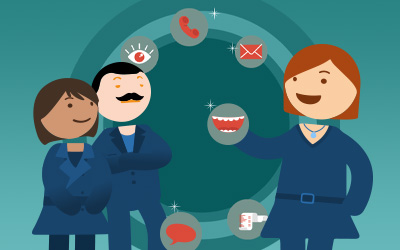If your goal in business is to provide quality customer service, you need to understand what your customer journey looks like. So, what exactly is a customer journey? To put it simply: it’s the steps your customers will take when dealing with your business. Understanding the way your customers interact with your business allows you to tailor the way in which your business interacts with its customers.
While there are no universal names for each stage in the customer journey, most will look something like this: awareness, consider, decide, buy, use, loyalty, and advocate.
Of these seven steps, which do you think is the most crucial? Naturally, most people will say ‘buy’. But how do you expect your customers to buy your product if they don’t know what it is or how to do it? Every, single step in your customer journey is crucial. They have symbiotic relationship where each step benefits the next and the previous.
Let’s look a little closer at each step.
Awareness
I’m sure you’ve heard the terms ‘brand building’ or ‘brand awareness’ before, right? The Awareness stage of your customer journey is all about getting your products in front of as many interested people as possible.
To get eyes on your products, you need to use marketing techniques that reach a large audience. Don’t worry about getting too specific. At this stage, it’s all about getting noticed — think display ads, pay-per-click ads, remarketing ads, email campaigns and even television. All you have to do is get people thinking about your brand.
Awareness is the reason businesses put their logos on sporting uniforms. These small ads don’t tell you anything about the business, what they stand for or what they do, but they do help to keep their brand in the minds of their existing and potential consumer base.
Consider
The Consider stage in your customer journey is about one thing: benefits. Why is the product or service you’re offering better than its competition?
When customers make a purchase, they want to know that their decision is the right one. Everyone wants the best, so it’s your job to convince them. While the Awareness stage was incredibly broad, the Consider stage is dense and informative. You need to provide all the information required to fully understand why your product is the correct choice.
Information-heavy web pages, blog posts and review sites are common in the Consider stage of the customer journey.
Decide
The Decide stage of the customer journey is about breaking down barriers. What remaining questions or concerns might your customers have about making a purchase?
Think about how you can offer them something priceless: peace of mind. Do you have a return policy? Do you offer payment plans? Does your website have product comparison features or testimonials?
Buy
The hard part’s done. Your customer has made it all the way through the Awareness, Consider, and Decide stages of their journey. It’s time to buy! The Buy stage of your customer journey should focus on making the transaction as simple and painless as possible.
If someone is shopping online, they understand that they’ll need to fill out a form. Make this easy. If you want to collect their email address, don’t make them enter it four times over three different checkout pages. Make your checkout process easy, engaging and, most importantly, short. Your customers will love you for it.
Use
So, your customer has made a purchase. Job done, right? Wrong. What happens if something goes wrong with the product, or the customer wants to make a complaint? In terms of customer satisfaction, the Use stage is the most important step in your customer journey.
Make sure your customer knows that you care about them and their experience with your product. Online, social media, and email support should be a pleasant and efficient experience for your customers.
What support systems does your business have in place for post-purchase customers?
Loyalty
I sold one product to that customer, so I’m happy. No one has ever said that. It’s much easier to maintain an existing customer than it is to find a new one. This is why the Loyalty stage of your customer journey is so important.
Repeat customers are the backbone of any business. But you have to give people and incentive to stay loyal to your brand. Sometimes you have to give a little to get a lot. Why do you think so many businesses around the world have loyalty programs?
The incentives you offer don’t have to be huge, but they have to be there. It could be a discount for ordering a larger quantity or free shipping for spending $100. Make sure you’re offering your customers a reason to stay loyal. Otherwise, they’ll go elsewhere.
Advocate
In the Awareness stage, we talked about how important it is to get your brand in front of as many people as possible. While this is a crucial step, there’s one way to make it even better: advocacy.
People are far more likely to make a purchase if the product has been recommended to them by someone they trust. This doesn’t have to be a close friend or a relative; it can be a celebrity, influencer, or a thought-leader.
What opportunities does your business give your customers to recommend your products? Once your customers start raving about your products, new customers who see their reviews will begin their journey at the awareness stage.
Not sure what your customer journey looks like? Download our Customer Journey Planner













